DIY Loudspeakers: HOME INDEX UPDATES RESPONSE WHAT'S NEW
High-pass filter for power amps
Copyright 2019-20 © Troels Gravesen
This page relates to the
Ellipticor-3 speaker but may be generally applicable to any speaker
system in need of a subwoofer and some increased power handling.
One of the features of the Ellipticor-3 speaker is that it does not have
a high-pass filter (passive that is). Now, with all the good things this
does, it also means the e.g. 18WE driver gets the full signal including
the deepest bass. This goes well even at loud levels due to its
phenomenal dynamic headroom and the small closed 18WE cabinet, but how about
relieving the 21WE and 18WE for at least some of the deep bass where
really the 32W woofer does the hard job of moving air - and does it well
even alone, or partly alone.
A simple 1. order passive high-pass filter for the top section
would mean 200+ uF! And they better be really good - and subsequently
seriously expensive. In fact, it would cost a fortune.
The trick is to introduce the high-pass filter before the power
amplifier having an input impedance of some 10-100 kOhms depending on
tubes or solid state. Having a high input impedance calls for very small
capacitor values, like 33-200 nF (not uF!). These come a affordable
prices - even for the very best copper foils available.
It's all very simple as can be seen below. For a single-ended RCA cable you
simple add a capacitor in the plus wire. That's all!
Now, we need to know the input impedance of the power amplifier and
manufacturers usually declaring that value. For solid state amplifiers
we usually find some 10-20 kOhms although even 100k has been seen for
solid state amps. For tube amplifiers the usual input impedance is
around 100 kOhms, although my EAR-861 makes 20k (bal).

Above you can see the capacitor values need for -3dB @ 60, 80, 100 and
120 Hz respectively.
Pick nearest value. +/- 5% of calculated value is excellent.
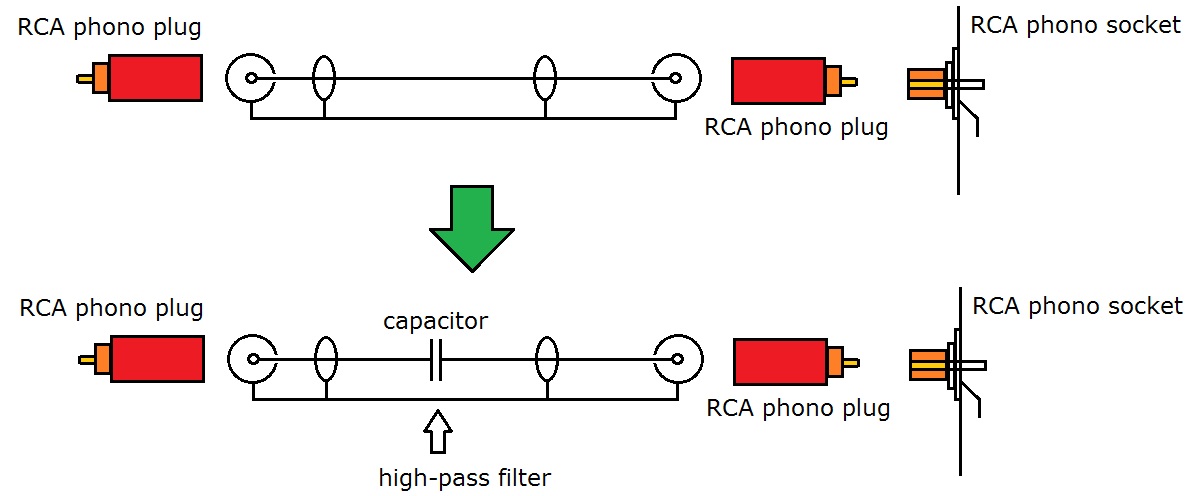
Simple 1st order high-pass filter for single
ended RCA cable. You may make a small cable with a male and female phono
plug and wrap it all in heat shrink tubes like seen below.


For balanced operation we obviously need two capacitors.
What capacitor value and which point of crossover?
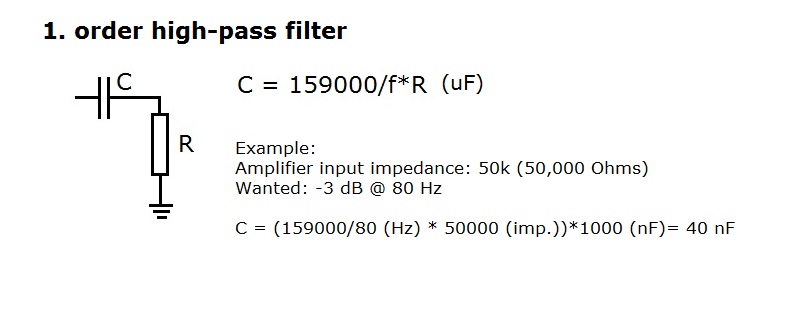
For the Ellipticor-3 I suggest - 3dB @ 80 Hz, which means the top
section will be down 6 dB @ 40 Hz - and it makes a difference! It
doesn't subtract from the wonderful fullness of upper bass/lower-middle,
but it does increase power handling of the whole system and we can play even
louder - which we probably shouldn't. But not having the midrange driver
pumping deep bass has a positive impact on the midrange as well
and it also relieves the power amplifier of some back-EMF coming
from the speaker drivers. Pretty much a win-win situation.
You can calculate your value from this site:
http://www.learningaboutelectronics.com/Articles/High-pass-filter-calculator.php#answer1
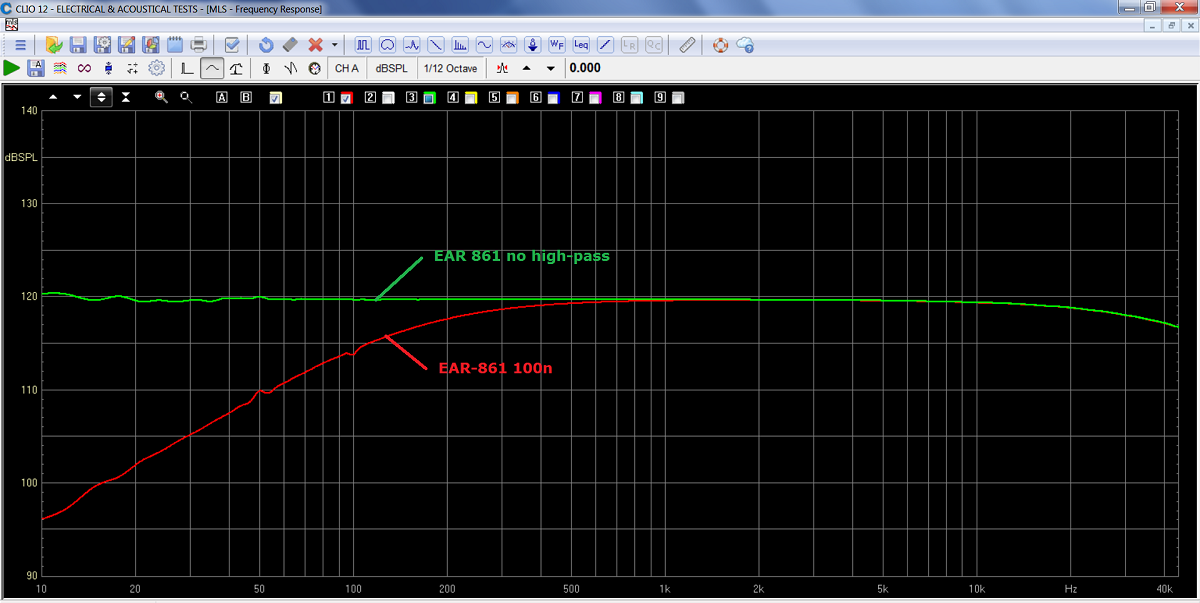
Above the EAR-861 power amplifier with 100n
in series with the signal. -6dB @ 100 Hz proved too much and I ended up
with 220n.
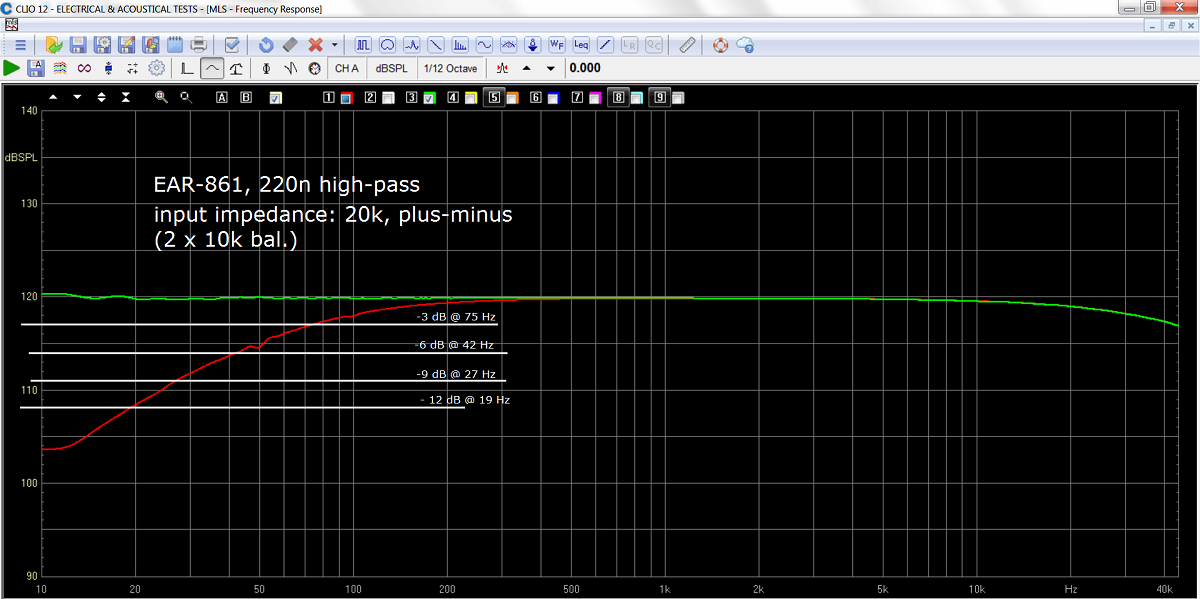
Above the EAR-861 with 220n high-pass filter.
Measured input impedance: 20k (2 x 10k balanced).
Calculated value for -3dB/80 Hz: 199 nF. I'll keep my 220n.
The input impedance of the EAR-861 is determined by the attenuator,
apparently 2 x 10k. Not 47k as stated in advertising.
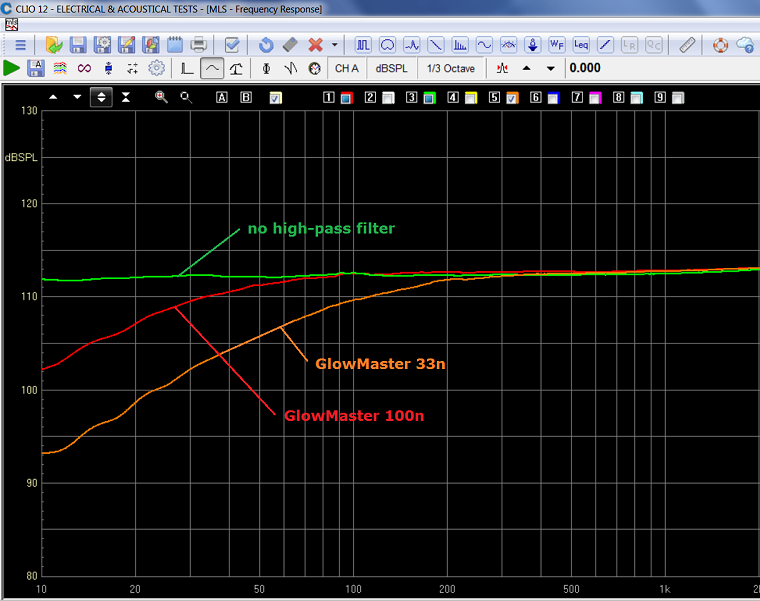
Above my GlowMaster with 33n and 100n in series with the input signal. I
ended up with 47n for the Ellipticor-3 speaker driven by this amp.
Measured impedance of GlowMaster: 94k (2 x 47k bal.)
Calculated value for -3dB/80Hz: 42n. I would use 47n for the nearest
value - or 2 x 22n. 39n is hard to find.
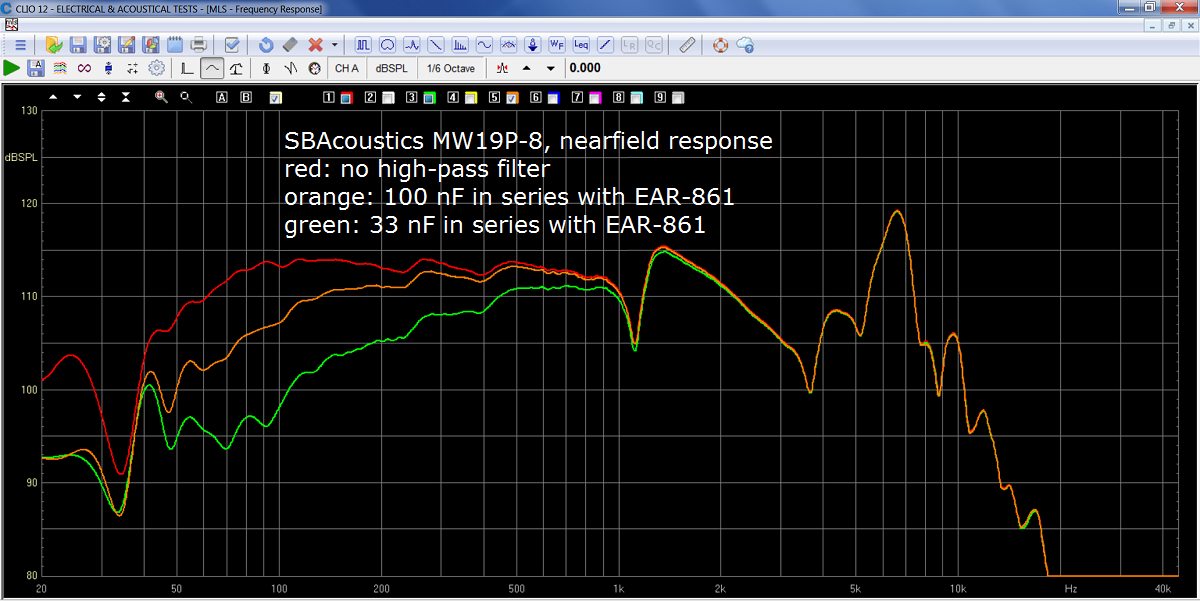
Measuring the SBAcoustics MW19 driver near-field, 1 mm from cone. This
usually looks grim, but don't worry, looks much better far-field.
100n was found suitable here when mating the speaker with a 10" bass
driver running low-pass LR2 @ 80 Hz.
Make your calculation based on preferred roll-off and buy some cheap polystyrene caps to try it out before deciding on more expensive foil capacitors.
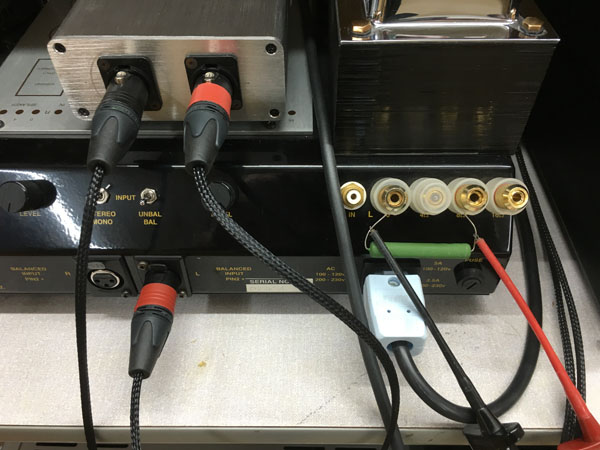
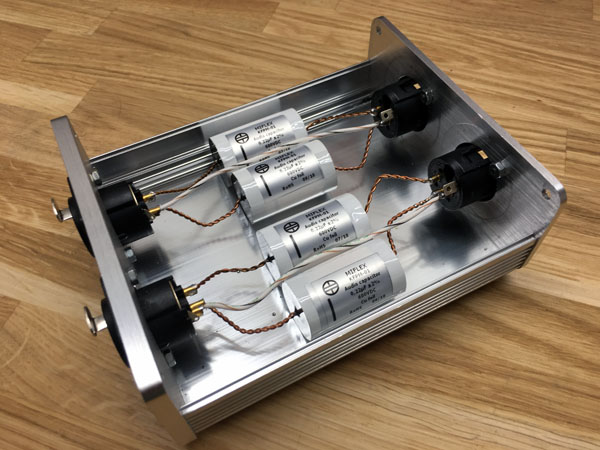
Left: Measuring the frequency response on my
EAR-861 amp with an 8.2 Ohm load.
Right: A nice (and cheap) eBay Chinese alu box fitted with XLR sockets
and 220n Miflex copper foil caps.
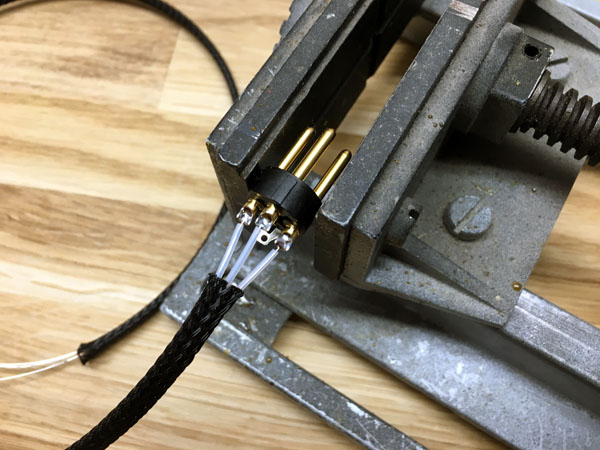
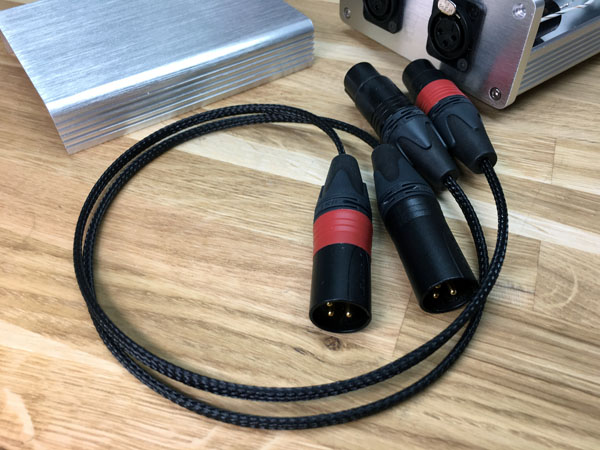
I made a pair of 0.5 m XLR cables from solid
0.4 mm silver in Teflon tubing.
To secure the wires and the flexible sleeve, I fill up the plug around
the wires with Superfix. This also secures no oxygen gets into the the
Teflon tubing oxidising the silver wire.